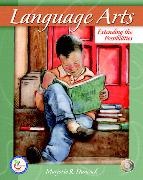Read more
List of contents
Chapter 1 A New Vision for the Language Arts: Extending the Possibilities
Chapter 2 Teaching in the Language Arts Classroom: Creating a Learning Community
Chapter 3 Language as the Focus of Diversity: Portraits of Language Learners
Chapter 4 Emergent Literacy: Transitioning from Home to School
Chapter 5 Embarking on the Journey toward Literacy (K-2): The Literacy Apprenticeship
Chapter 6 Listening/Speaking: Talk in a Community of Learners
Chapter 7 Continuing the Literacy Apprenticeship: Reading Workshop and Comprehension Strategies (3-8)
Chapter 8 The Writing Apprenticeship: Steps toward Literacy (3-8)
Chapter 9 Narrative and Poetic Writing: Creating Young Authors
Chapter 10 Expository Writing: Sharing Information in a Literary Mode
Chapter 11 Viewing and Visual Representation: Extending the Language Arts
Chapter 12 Supportive Tools of Writing: Spelling, Grammar, Mechanics, Handwriting/Word Processing
Chapter 13 Technology and the Language Arts: Exploring the New Literacies
Chapter 14 Interdisciplinary Instruction: Language Arts Connections to the Content Areas
Chapter 15 Literacy Assessment: Monitoring Ongoing Growth and Progress
Summary
Language Arts: Extending the Possibilities shares an insightful, developmental view of the language arts as children's literature, visual literacy, and technology extend the dimensions of integrated language arts instruction. Expanding instructional horizons beyond reading/writing and listening/speaking to viewing/visual representation, the new language arts help prepare K-8 students with an array of receptive and communication options. Brimming with classroom-based lesson plans, new technology features, authentic children's work samples, interdisciplinary connections, and assessment choices, this visually appealing text projects an innovative view of teaching and learning the language arts in the 21st century.

